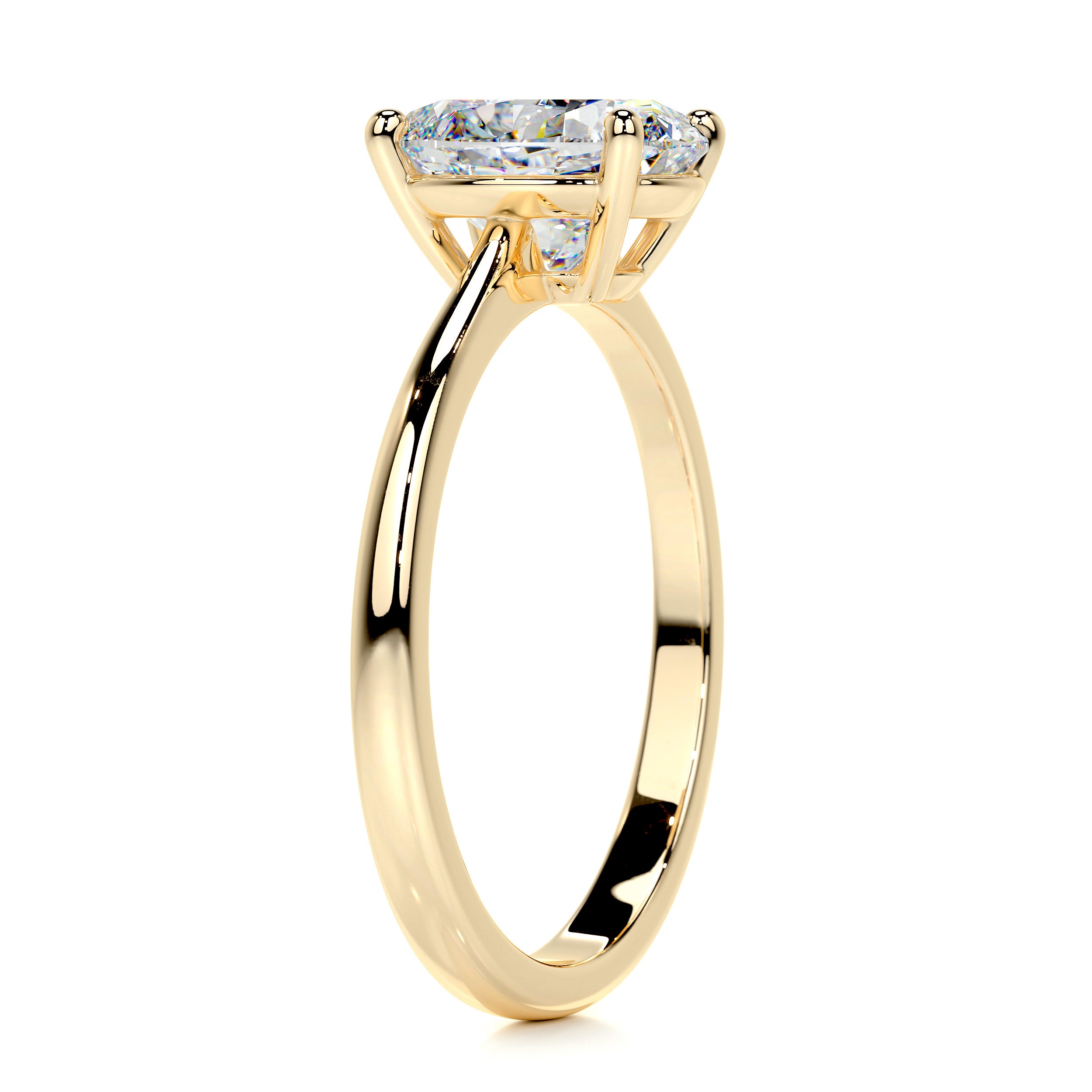With all the focus on lab-grown diamonds, also called LGD today, it’s made a lot of us wonder if it is also possible to create lab-grown gemstones. That’s a fascinating question, and we’re here to help you sort it all out.
Lab grown diamonds, also called synthetic diamonds, cultured diamonds, created diamonds, and more, were made to mimic the exact same procedure and processes under which natural diamonds were created below the earth. It took billions of years more to create those natural diamonds, but still!
Long Time in the Making
So, scientists have also worked hard for years to create laboratory-grown colored gemstones because a lot of collectors want pristine examples of their favorite stones. The various processes used to create identical gemstones to those found on the earth were first successfully achieved hundreds of years ago. The gem world began seeing early synthetic gems back in the late 1800s. It’s likely their first major use was actually outside of the jewelry world—these early manufactured gemstones were probably earmarked for industrial application. The first ones were synthetic ruby. Other gemstone varieties that were manufactured in a lab soon followed.
They could often be made with extremely clear crystals, and best of all, in gorgeous vibrant hues. It didn’t take long for the US Federal Trade Commission to mandate that any lab created gemstones be clearly described so consumers understood exactly what they were buying. That’s a good thing. There are certainly customers for both natural and lab-grown gemstones.

The First Lab Grown Gems for Jewelry
The first commercially successful lab-grown gemstones were the result of a newer technology at the time. Called flame fusion, the labs successfully created beautiful stones by dropping powdered chemicals onto a special high-temperature rotating plate. More complex than we’re stating here, of course, this method remains in use today as a magnificent way to create lovely stones that consumers crave for their jewelry. The most common gems created this way are synthetic spinel and synthetic corundum (both sapphire and ruby).
It's important to note that when we say synthetic, we strictly mean diamonds or gemstones whose composition is identical to their earth-mined counterparts. Otherwise, they would be just be called simulants.
Later Advancements
A later method was developed called the Flux Growth Process. Alexandrite, that mesmerizing colored stone that changes color can be produced through this method. Also, sapphires, ruby, emerald, and spinel are created this way. It’s expensive though. But consumers find their high quality and stunning colors well worth the extra cost.
Natural -v- Synthetic
While some collectors are drawn into the lure of colored stones by stories of their exotic origins around the globe, other jewelry fans refocus what’s important to them when collecting gems.
For instance, some consumers prefer the ethical and sustainable aspects of lab-created gemstones. There was no earth moving involved with lab grown gemstones. They are sustainable in other ways—these stones can successfully be created time and again with no negative impact on our planet. When you add that to the extraordinary beauty of lab stones, you’ve got a winning combo.

Budget Wise Choices For Lab Grown Gemstones
For all of us, no matter what our budget, the cost is inevitably a consideration. We know that gemstones are valued and priced according to their size, beauty, color, clarity, and rarity. The stones from a lab tick off all the boxes in this shortlist. But you’ll be happy to discover that created stones are a fraction of the price of their natural counterparts brought from the earth.
So, there you have it. There are several procedures that can create lab grown colored stones successfully in a lab. Those specifically called synthetic are actual true gemstones in every way. Their optical, chemical and physical traits equal the same gems brought from the earth. The only difference is that they were helped along in their creation in a laboratory environment.
Lookalike-colored stones that aren’t true synthetics are referred to as stimulants. They cost even less than synthetic gemstones.
These made-made stones will be accurately described by legitimate dealers and retailers. They want to instill confidence in their products, so no attempt is made to conceal this fact. And given that many shoppers are looking for alternatives to earth mined gemstones for ethical reasons, finding the perfect lab-grown gemstone is a real bonus!
Good to Know
Your lab grown gemstone will have the same physical traits as its natural counterpart. That means, in the case of sapphire or ruby, for example, the synthetic version is equally durable. That’s good to know. We should always consider the hardness of gems when buying them. For example, diamonds are the hardest stones, and next to that are ruby and sapphire, (both corundum). So, they are well suited to be placed in rings which get a lot of wear.
Softer stones, either natural or synthetic are better suited to earrings and pendants.
We’re very fortunate today to have so many options when shopping for jewelry. We don’t have to sacrifice beauty or gemstone size if we have a smaller budget. We can simply shift our search to the same gemstones we want but look for the lab grown (or synthetic) group of stones. You’ll get all the envious looks and compliments that the earth mined stone would give you—and sometimes even more!




















